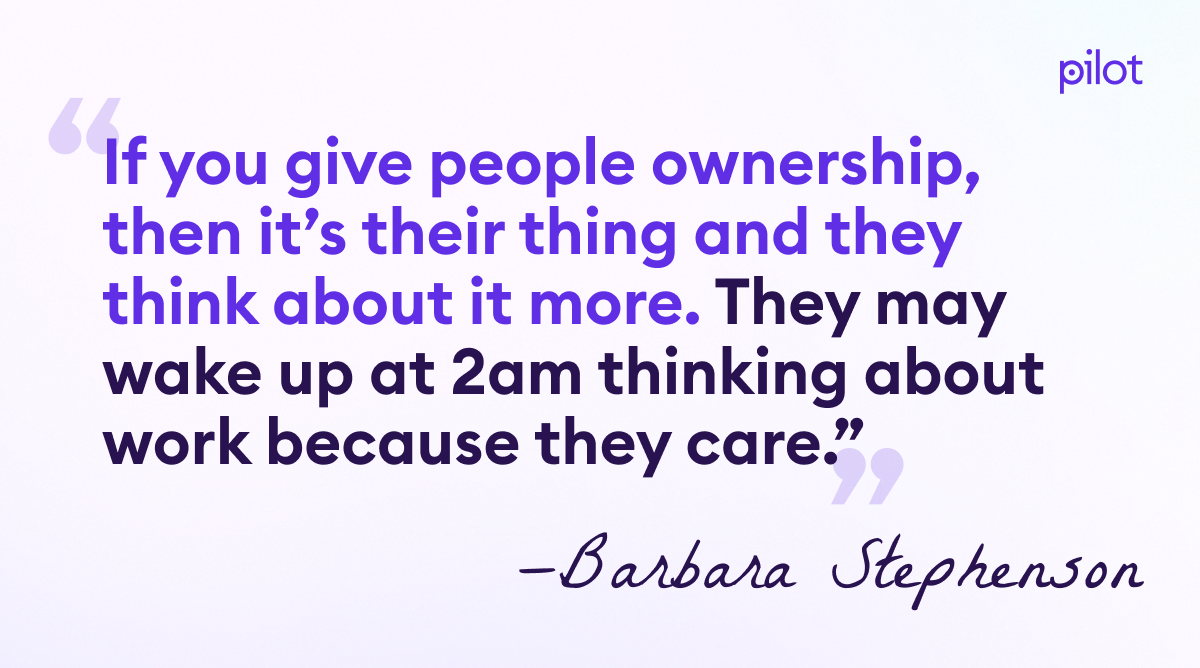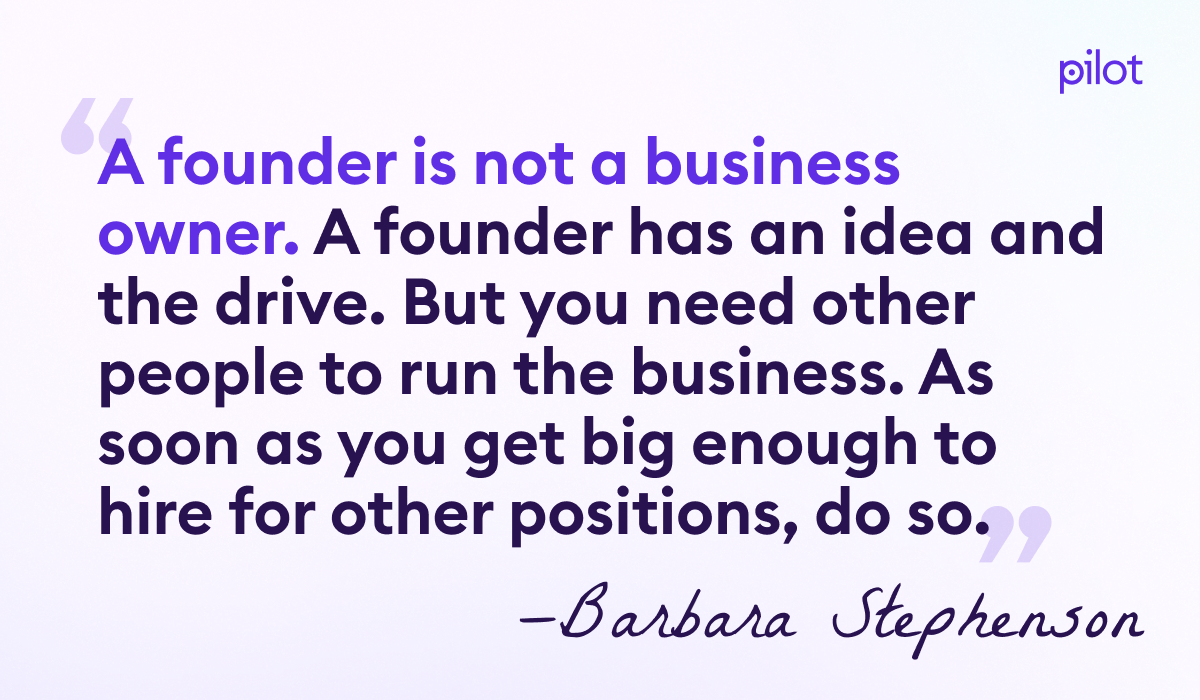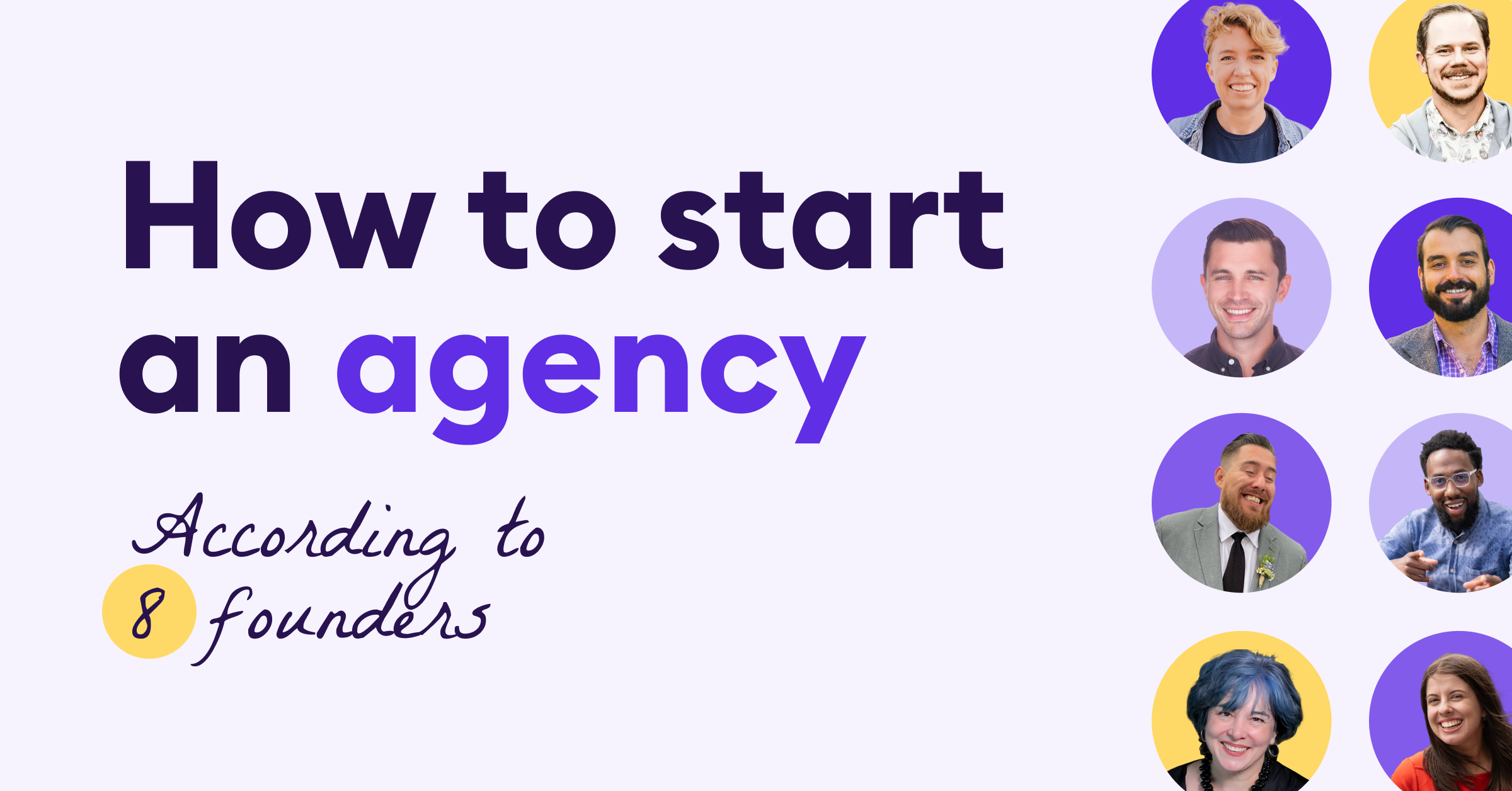How Barbara Stephenson scaled 300feetout by fixing operations
.png)
It’s pretty rare for an employee to end up owning the company, but Barbara Stephenson did, and has now been running the award-winning web agency 300FeetOut for 20 years.
She started out as chief operating officer, managing projects, clients, HR, and other parts of the back office. When the original owner decided to pursue a career in photography, she approached Barbara with an offer to own the agency. After some deliberation and talking to clients, she agreed.
Barbara’s philosophy is to treat your team and clients well so they show up for you, and it’s part of why she’s grown 300FeetOut to a digital marketing agency that has won over 50 awards, generated over 1.7 billion page views, and worked with brands like Visa, Netflix, Four Seasons, and The Walt Disney Family Museum.
In this profile, we share why Barbara had to overhaul her systems to scale, and why she’s been slow to grow headcount beyond 11 full-time employees.
Success story: How one agency got clear on their true hiring costs →
What got you to $1M won’t get you to $10M
When Barbara took over 300FeetOut, the agency was small. They had a lean team, a few big clients, fixed-price projects, and a bookkeeper and a CPA managing their finances. This setup worked, until it didn’t.
They’d worked with mostly biotech startups, but as they started drawing clients in venture capital and tech, projects would run over budget. With those new clients came new compliance demands like the General Data Protection Regulation (GDPR), the Health Insurance Portability and Accountability Act (HIPAA), background checks, and other international security standards. And they were struggling to handle the legal, tax, and compliance requirements that came with serving more regulated industries.
Their tax obligations also changed. What used to be a $5,000 pass-through cost became a $500,000 pass-through cost, and they needed to get smarter about their finances.
Barbara knew their systems weren’t built to scale. It could handle initial growth, but to get to another level, they needed to rebuild everything from their general ledger to contracts to forecasting. Barbara calls her resulting effort their “year of compliance,” where they crammed a decade’s worth of rework into one year. “We redid all of our systems so we could scale,” she says. “Finance, contracts—you name it.”
Her longtime bookkeeper—who had been with her for 15 years—simply wasn’t equipped to handle that level of complexity. So they eventually hired a fractional CFO, a controller, and a more experienced bookkeeping firm and CPA.
Looking back, Barbara says she thought they were set up properly, but she didn’t know what she didn’t know. “It would’ve been a lot easier if we had set things up correctly from the start,” she says.
.png)
Early-stage systems won’t support mid-to-late-stage growth. As you start to grow, your systems need to evolve too. But setting up the right systems early is almost always easier and cheaper than fixing them later.
Hiring is one thing—Retaining is another
Barbara developed her hiring instincts long before she ran an agency. At a previous job in an auction house, she was responsible for hiring preview staff and ran back-to-back interviews every week, three hours straight, 15 to 20 minutes per person. It taught her how to read people and trust her instincts. “I learned very quickly when people were wasting my time or just not the right fit,” she said.
That experience still shapes how she hires at 300FeetOut. She pays close attention to detail, starting with the resume. Job postings often receive thousands of applications, so she’s quick to filter out candidates who make basic mistakes like spelling errors or using the wrong company name.
But for Barbara, hiring is just the beginning. What really matters is retention. Two employees are celebrating 20 years at the agency, and several others have stayed more than a decade. That kind of tenure is rare in the agency world, and Barbara credits it to two things: giving people a sense of ownership and supporting their professional development even when that means helping them move on—and some of her favorite employees no longer even work with her.
“If you give people ownership, then it’s their thing and they think about it more. They may wake up at 2am thinking about work because they care,” says Barbara.

That kind of ownership doesn’t have to mean equity. It can mean giving people input on decisions, trusting their judgment, and showing them that their contributions actually matter.
She’s also intentional about only hiring people who align with the agency’s values; otherwise, they won’t stay for long. For instance, she only hires people who would love working at a small, collaborative firm instead of a 1000-person agency.
Keeping team size small intentionally
Increasing headcount is not the same as growth. You can run a high-performing, profitable agency with a small, committed team as long as you build a culture where people feel invested in the work and the outcome.
That’s exactly what Barbara does. Despite working with major brands like Visa, Netflix, Four Seasons, and The Walt Disney Family Museum and having plenty of chances to expand, she’s deliberately chosen to stay small. Only 11 full-time employees. “We're not a large agency, and we don't want to grow. We work very hard to stay our size,” says Barbara.
That choice is rooted in her past experience. Barbara spent years at larger companies before joining 300FeetOut, and it left her feeling disconnected. She felt her work wasn’t meaningful or personal, and she doesn’t want to feel that again.
Keeping the team lean fosters a sense of community and allows her to be intentional about workload. Everyone takes on bread-and-butter projects, but Barbara makes sure each person also gets one or two assignments that energize them. That balance is especially important for creatives and it’s a big reason why people stay.
Hire smart people where you lack skills
You don’t need to handle every task in-house. If you don’t have consistent demand for a skill, hiring full-time talent can be more expensive, and it often adds more management overhead. For many agencies, outsourcing is a smarter option as it saves time, reduces costs, and makes it easier to scale up or down as needed. It also keeps you focused on the work you do best.
Barbara outsources most of the back office: finance, payroll, legal, and insurance. This makes sense for an agency that deliberately wants to stay small. Instead, she works with a bookkeeping firm, a controller, a CFO, and a CPA to handle those functions.
She also outsources some client services the agency doesn’t specialize in, like PR, media buying, and content writing. Writing is one area clients often ask about, but she’s decided not to hire for it in-house. “We don’t have enough consistent work to keep a full-time writer engaged because our clients work in different industries, and it’s hard to get one person to do all that type of writing,” says Barbara.
Instead, she partners with specialized writers and content agencies who understand each niche deeply. Some of those relationships have lasted more than a decade. One writer has worked with 300FeetOut since the day the company was named.
Another thing Barbara does to solve problems she has no experience with is to network with other agency founders. She joined the Women Presidents Organization and formed a monthly peer group with other agency leaders to trade ideas, learn from each other, and share what’s working.
And so her biggest advice to agency owners is to recognize your limits and seek help where you’re lacking. “A founder is not a business owner. A founder has an idea and the drive to push it. But you need other people to run the business. As soon as you get big enough to hire for other positions, do so,” Barbara says.

Need to outsource finance or bookkeeping? Pilot can help. We handle bookkeeping, tax, and CFO support so you can stay lean, focused, and ready to grow. Book a free consultation.




.jpg)
.jpg)